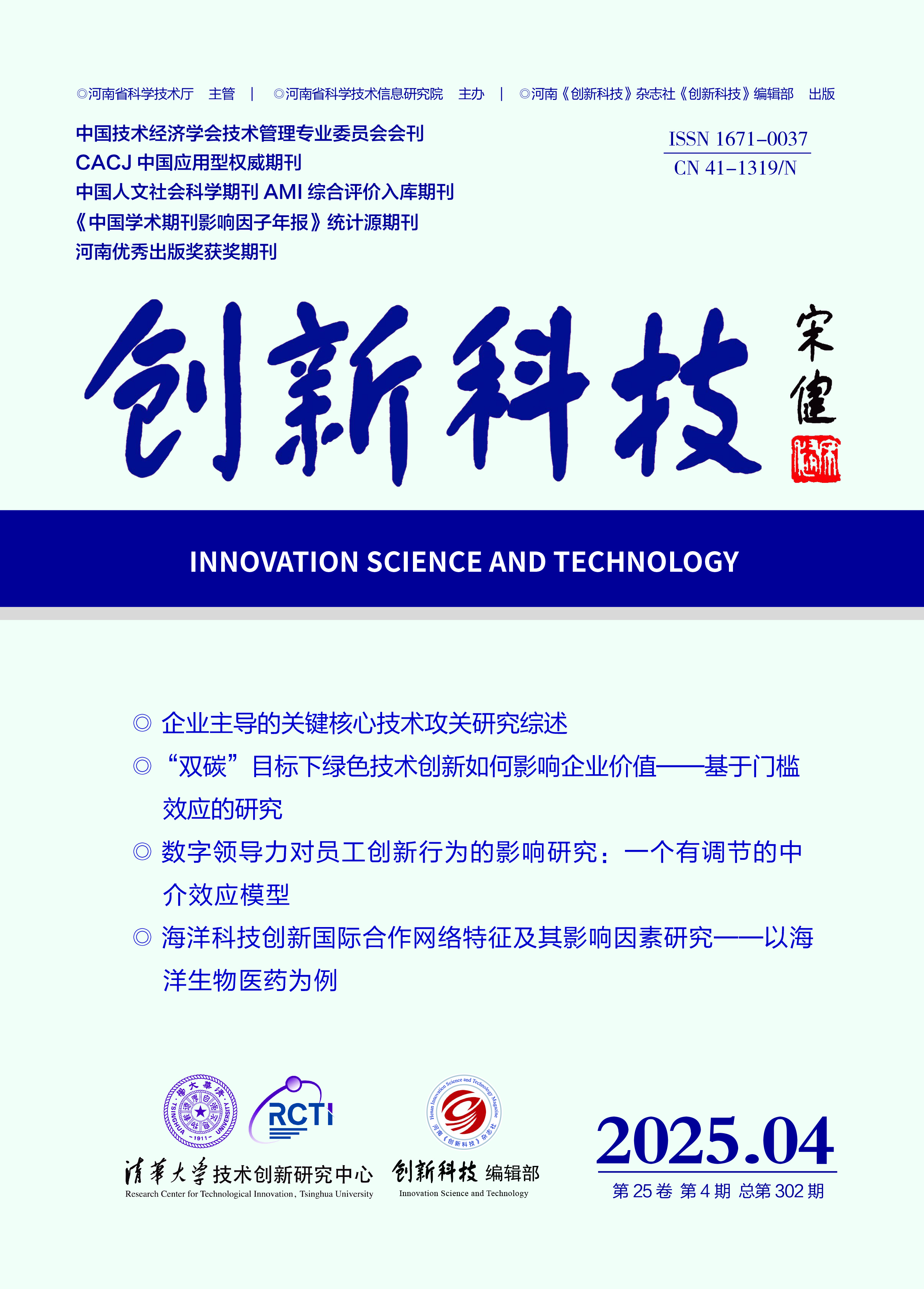INNOVATION SCIENCE AND TECHNOLOGY
Quick Search

All publication are peer-review
Peer review will take the from of double-blind review Judge objectively and impartially
There is no conflict of interest for the reviewer
Review articles shall be kept strictly confidential prior to publication
International Science & Technology Innovation Outlook
Characteristics and Influencing Factors of International Collabo⁃ ration Networks in Marine Science and Technology Innovation
— A Case Study of the Marine Biomedical Sector
Zhang Yi1 , Chen Zijian1,2 , Nie Xiaoting1 , Long Minglian1
(1.School of Management, Guangdong Ocean University, Zhanjiang 524088, China; 2.Department of Economics and Management, Jiangxi Youth Vocational College, Nanchang 330033, China )
Abstract: Under the strategic background of building a maritime power, international collabo‐ ration in marine science and technology innovation has emerged as a critical pathway to drive the high-quality development of the marine economy. However, existing research has not system‐ atically examined the structural features and driving mechanisms of the international collabora‐ tion network in this domain. To address this gap, this study conducts an in-depth investigation into the international collaboration network in marine science and technology innovation and its influencing factors. The findings provide practical insights and theoretical guidance for China's efforts to implement its maritime power strategy. Specifically, this study focuses on the field of marine biomedicine by analyzing scientific literature from the Web of Science Core Collection, covering the years 1982 to 2022. Social network analysis and QAP regression methods are em‐ ployed to identify the evolutionary patterns and key factors driving the international collabora‐ tion network in this field. The findings indicate that the international collaboration network in marine biomedicine is predominantly dominated by traditional maritime powers such as the United States, Japan, and the United Kingdom. These countries leverage their advantageous posi‐ tions within the network to control the flow of resources related to marine science and technology innovation, benefiting themselves and exerting influence over other countries. Furthermore, the close collaboration between the traditional maritime powers in Europe, the United States, and Ja‐ pan highlights the small-world characteristics of the network, resulting in the monopolization of high-value resources by these countries. Although China has emerged as a significant new force in the international collaboration network for marine science and technology innovation, its posi‐ tion remains less advantageous compared to core countries like the United States, Japan, and the United Kingdom. The QAP analysis reveals that cultural proximity between countries signifi‐ cantly facilitates the establishment of cooperative relationships, whereas institutional differences and geographical distance act as barriers to collaboration. Economic distance, however, does not exhibit a significant correlation with collaboration. This study makes contributions in two as‐ pects. Theoretically, it develops a comprehensive analytical framework integrating network char‐ acteristics and multidimensional distance factors, thereby enriching the research paradigm of in‐ ternational collaboration in marine science and technology innovation. Practically, it recom‐ mends optimizing the structure of the international collaboration network in marine science and technology innovation, prioritizing partnerships with culturally complementary and institution‐ ally close countries, and deepening collaboration with core countries. These measures aim to en‐ hance China's discourse power and resource allocation capacity in the global marine science and technology innovation network, providing crucial recommendations for the implementation of the maritime power strategy.
Key words: marine science and technology innovation; international collaboration networks; marine biological medicine; social network analysis; country distance